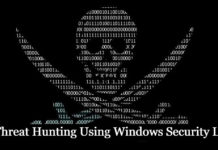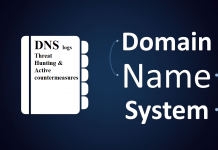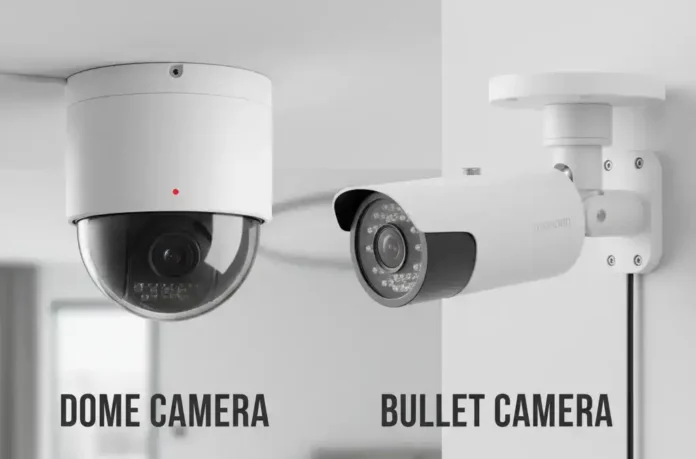As physical and cybersecurity continue to converge, commercial businesses face increasing pressure to deploy smarter, more resilient surveillance systems. One of the most common questions among IT and facility managers alike is whether to install dome or bullet cameras. Both options have their advantages, and the right choice depends on your security objectives, environment, and network setup.
In the debate of dome vs. bullet camera, the decision is no longer just about appearance or placement. It’s also about data protection, remote accessibility, and how each device fits into your organization’s broader cybersecurity framework.
Understanding the Basics: Dome vs. Bullet Camera
Dome cameras are named for their dome-shaped housing, which conceals the camera’s direction and makes them more resistant to tampering. They’re ideal for indoor and outdoor use where aesthetics and discretion are priorities, like lobbies, hallways, and retail spaces.
Bullet cameras, by contrast, have a cylindrical shape and are designed for longer-range viewing. Their visible deterrent effect and powerful zoom capabilities make them a strong choice for parking lots, perimeters, and loading docks.
When deciding between a dome vs. a bullet camera, consider the following:
- Installation environment: Dome cameras offer vandal resistance and a wider field of view, while bullet cameras provide long-distance clarity in outdoor areas.
- Visibility and deterrence: Bullet cameras are more noticeable, serving as an active deterrent, whereas dome cameras blend into their surroundings.
- Maintenance and cleaning: Domes may require occasional cleaning due to smudges or dust buildup on their covers, while bullet cameras are easier to maintain but more exposed to the elements.
The Cybersecurity Dimension
In the modern security ecosystem, the dome vs. bullet camera decision also affects your digital attack surface. IP-based surveillance systems connect to your corporate network, meaning that weak encryption or unsecured firmware can become gateways for cyber threats.
When integrating cameras into your cybersecurity strategy, prioritize:
- Encrypted video transmission: Whether dome or bullet, your cameras should use end-to-end encryption protocols (such as HTTPS and TLS) to protect live feeds and recorded footage.
- Network segmentation: Isolate surveillance devices on a dedicated VLAN to prevent unauthorized access to sensitive business systems.
- Firmware management: Regularly update all cameras to patch vulnerabilities. Older bullet models, in particular, may lack modern encryption or automatic updates.
- Credential control: Replace default passwords immediately and implement role-based access to limit who can view or manage video data.
By viewing surveillance systems through a cybersecurity lens, your team can reduce digital risk while maintaining physical safety.
Dome Cameras: Strengths and Strategic Use Cases
Dome cameras offer a discreet yet powerful way to monitor commercial spaces. Their compact design and wide viewing angles make them ideal for environments that require both security and visual appeal.
Here are some strengths of the dome camera:
Vandal resistance and aesthetics
Dome cameras’ low-profile design makes them difficult to tamper with or reorient, which is valuable in high-traffic or public-facing environments. The tinted dome housing conceals the direction of the lens, creating uncertainty for anyone attempting to avoid detection. This element of discretion makes dome cameras especially useful in businesses that prioritize both aesthetics and security, such as retail stores or corporate offices.
Indoor coverage flexibility
Dome cameras are well-suited for indoor environments like offices, hospitals, and schools where discreet monitoring is essential. Their wide viewing angles allow for extensive coverage of hallways, reception areas, and lobbies. Many modern models include pan-tilt-zoom (PTZ) capabilities, which let operators adjust the viewing direction and zoom remotely. This flexibility helps security teams adapt quickly to real-time events without needing to manually reposition the camera.
Strong integration potential
Dome cameras integrate seamlessly with network video recorders (NVRs) and cloud-based video management systems (VMS), allowing for centralized monitoring and control. They support advanced cybersecurity features such as encrypted video transmission and multi-factor access authentication. This connectivity ensures that footage remains protected from tampering or unauthorized access while still being easily retrievable for investigations or compliance reviews.
Bullet Cameras: Strengths and Strategic Use Cases
Bullet cameras are designed for visibility, distance, and durability, making them a reliable choice for outdoor and perimeter surveillance. Their long-range lenses, weatherproof housing, and noticeable design provide both practical coverage and an effective deterrent against unauthorized activity.
Here are the top strengths of bullet cameras:
Superior range and clarity
Bullet cameras often feature larger lenses and infrared illumination, which allow them to capture detailed, high-definition footage even in low-light conditions. Their narrow viewing angle provides enhanced clarity over long distances, making them ideal for outdoor surveillance or perimeter protection.
Businesses that require detailed monitoring of entry points, parking lots, or loading docks often rely on bullet cameras to deliver consistent image quality in all lighting conditions.
Visual deterrence
Because bullet cameras are easily noticeable, they serve as an effective deterrent to potential trespassers and vandals. The visible presence of a bullet camera sends a clear message that the area is being actively monitored.
In commercial environments such as warehouses, construction sites, or industrial facilities, this visibility can help reduce theft and unauthorized access before incidents occur. The deterrent effect alone often justifies their placement in exposed, high-risk areas.
Easier maintenance and positioning
Bullet cameras are mounted on directional brackets that make installation, adjustment, and maintenance straightforward. Their exposed design allows technicians to access lenses and cables without disassembling complex housings, which saves time during maintenance checks.
For security teams that oversee multiple outdoor camera feeds, this setup simplifies repositioning and ensures consistent alignment with perimeter or entrance zones. This ease of maintenance makes bullet cameras a practical choice for large commercial or industrial properties.
Dome vs. Bullet Camera: Which Is Better for Your Security Infrastructure?
Neither type is universally better; the choice depends on your operational priorities and cybersecurity posture. Many commercial businesses deploy a hybrid camera strategy, using dome cameras for indoor, high-traffic areas and bullet cameras for outdoor perimeter defense.
From a cyber-physical perspective, both camera types can enhance organizational resilience if they’re deployed with secure networking practices and supported by regular maintenance. What matters most is ensuring that your camera infrastructure aligns with your data protection standards and complements your intrusion detection systems, firewalls, and network monitoring tools.
Final Thoughts
The dome vs. bullet camera discussion goes beyond lens size or mounting type. It’s about building a surveillance strategy that bridges physical and digital security. By understanding how each camera type contributes to visibility, deterrence, and network security, your organization can make smarter, more secure investment decisions.
Whether you’re upgrading an existing surveillance network or planning a new deployment, take a unified approach that protects both your physical perimeter and your digital infrastructure.



































